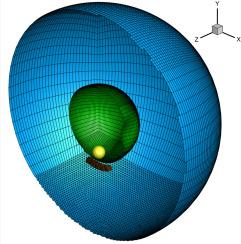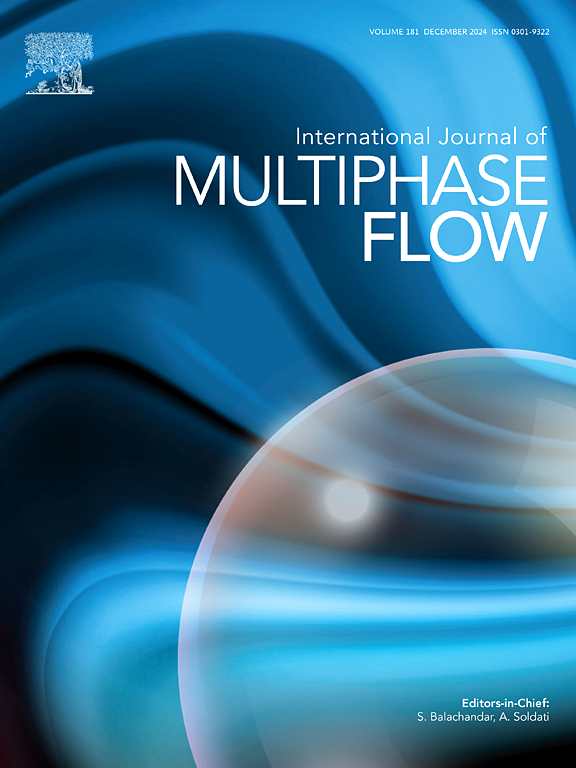磁滴靶向治疗视网膜脱离的前沿跟踪研究
IF 3.8
2区 工程技术
Q1 MECHANICS
International Journal of Multiphase Flow
Pub Date : 2025-08-05
DOI:10.1016/j.ijmultiphaseflow.2025.105410
引用次数: 0
摘要
我们研究了铁磁流体滴靶(FDT)治疗视网膜脱离(RD),第一次考虑到眼睛的真实三维几何形状和磁铁结构以及介质的粘弹性流变学,即玻璃体(VH)。将前向跟踪方法(FTM)扩展到一般三维非结构化欧拉网格和强壁效应。挑战包括当液滴在磁场作用下在视网膜上扩散时求解器的准确性和鲁棒性,这就需要设计一个多区域欧拉网格,定义正面和墙壁之间的阈值距离,以及选择有效的正面平滑和墙壁附近的体积校正FTM子算法。通过模型验证,研究了不同设计参数对行进时间、沉降时间、视网膜覆盖面积、冲击压应力等重要目标的影响。结果表明,除了磁键数外,液滴/ vh磁导率的比值对终端形状参数(如视网膜覆盖率)也起着关键作用。另外,同时增加这两个参数可以显著增加FDT总力、覆盖面积和应力集中,而降低drop-VH表面张力可以减轻视网膜上的应力集中。本文章由计算机程序翻译,如有差异,请以英文原文为准。

A front-tracking study of retinal detachment treatment by magnetic drop targeting
We investigate the Ferrofluid Drop Targeting (FDT) for the treatment of the Retinal Detachment (RD), considering, for the first time, the real 3D geometry of an eye and magnets configurations as well as the viscoelastic rheology of the medium, i.e., the Vitreous Humor (VH). A Front-Tracking Method (FTM) is extended to handle a general 3D unstructured Eulerian grid and strong wall effects. The challenges include the accuracy and robustness of the solver when the drop spreads on the retina under the effect of a magnetic field, which necessitates the design of a multi-region Eulerian grid and defining a threshold distance between the front and wall, along with the choice of an effective front smoothing and volume correction FTM sub-algorithms near the walls. After model validations, the effect of different design parameters on important objectives, such as the travel time, settling time, retinal coverage area, and impact compressive stress, are studied. The results reveal that, in addition to the magnetic Bond number, the ratio of the drop-to-VH magnetic permeabilities plays a key role in the terminal shape parameters, like the retinal coverage. Additionally, simultaneously increasing these two parameters, significantly increase the total FDT force, coverage area, and stress concentration, while decreasing the drop-VH surface tension can mitigate the stress concentration on the retina.
求助全文
通过发布文献求助,成功后即可免费获取论文全文。
去求助
来源期刊
CiteScore
7.30
自引率
10.50%
发文量
244
审稿时长
4 months
期刊介绍:
The International Journal of Multiphase Flow publishes analytical, numerical and experimental articles of lasting interest. The scope of the journal includes all aspects of mass, momentum and energy exchange phenomena among different phases such as occur in disperse flows, gas–liquid and liquid–liquid flows, flows in porous media, boiling, granular flows and others.
The journal publishes full papers, brief communications and conference announcements.

 求助内容:
求助内容: 应助结果提醒方式:
应助结果提醒方式:


